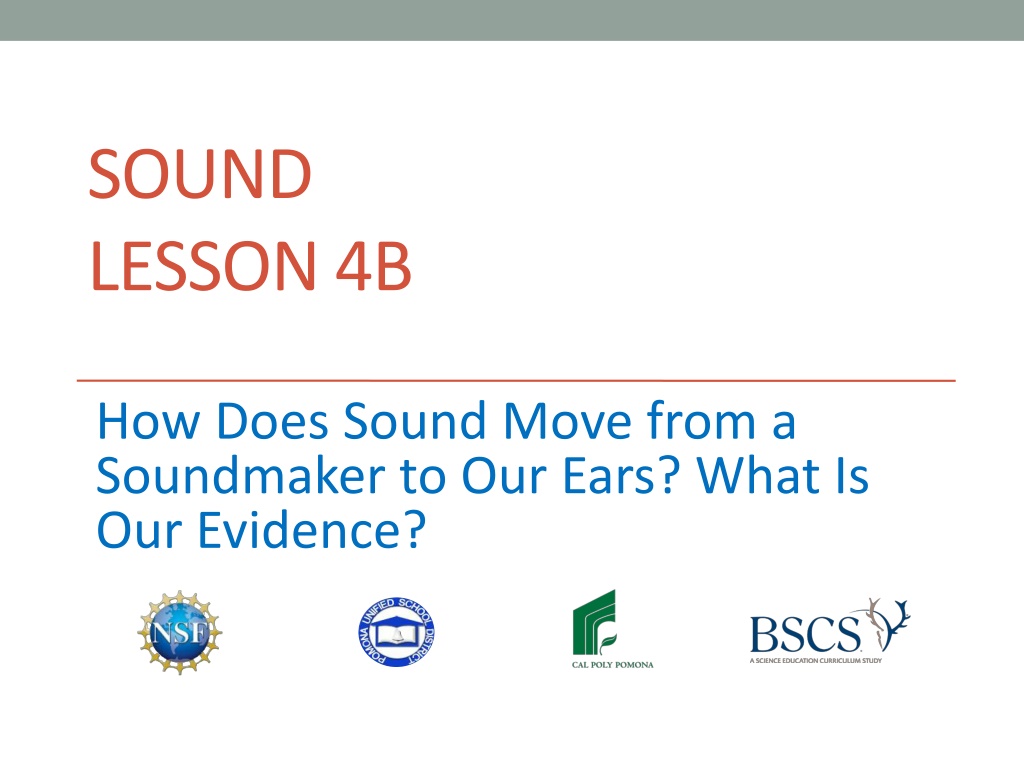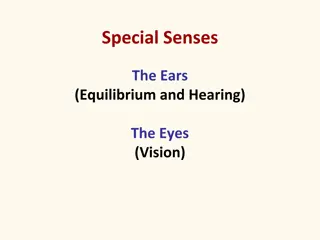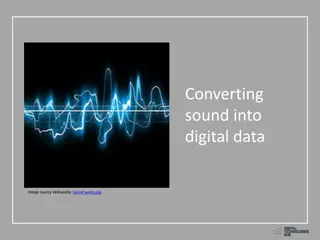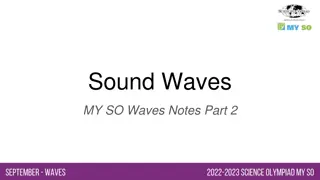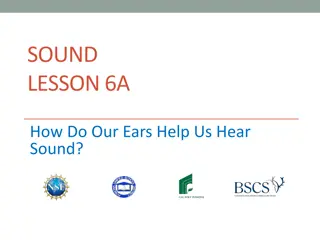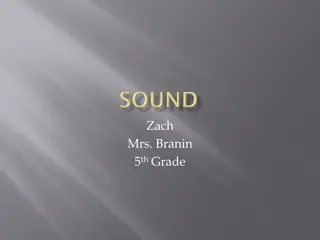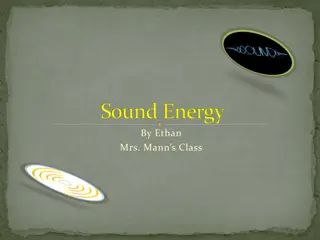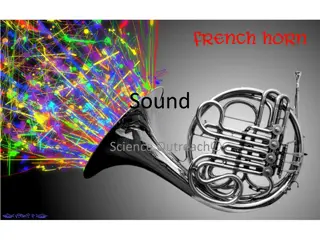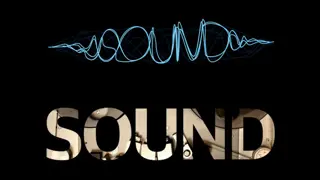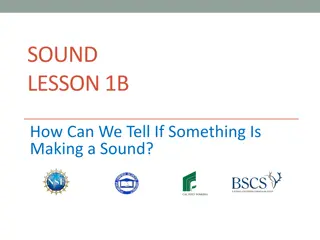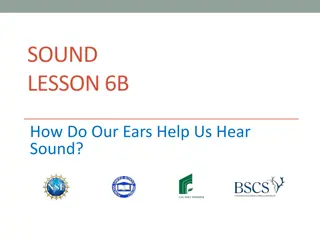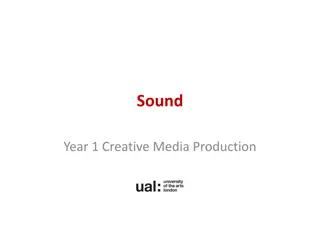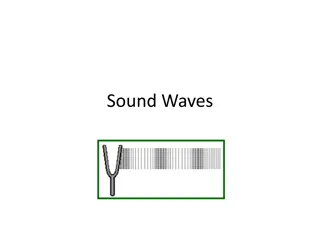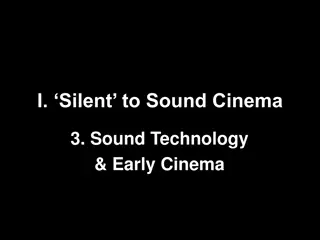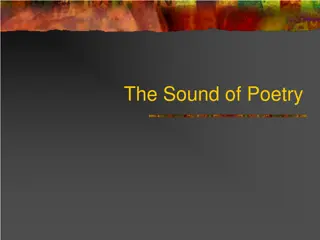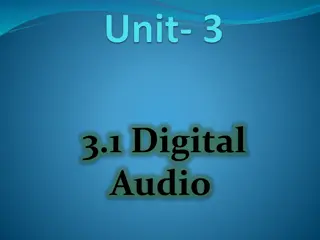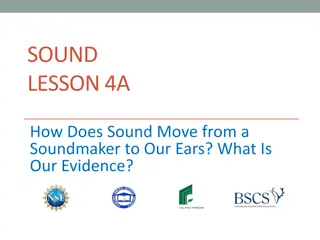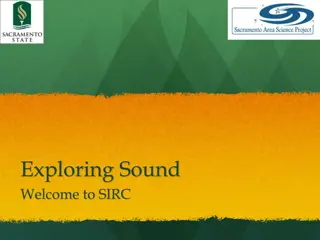Understanding How Sound Moves: From Soundmaker to Our Ears
Explore the journey of sound from a soundmaker to our ears in this informative lesson. Discover the evidence of how sound travels through air, connecting the vibrations between the source and our hearing. Engage in discussions, observations, and models to deepen your understanding of sound transmission.
Download Presentation

Please find below an Image/Link to download the presentation.
The content on the website is provided AS IS for your information and personal use only. It may not be sold, licensed, or shared on other websites without obtaining consent from the author. Download presentation by click this link. If you encounter any issues during the download, it is possible that the publisher has removed the file from their server.
E N D
Presentation Transcript
SOUND LESSON 4B How Does Sound Move from a Soundmaker to Our Ears? What Is Our Evidence?
Review: How Does Sound Move? What is the tuning fork doing? How does the sound move from the tuning fork to our ears? Images courtesy of BSCS
Review: What Is in the Space? What is in the space between the tuning fork and our ears? What did we find out? What is in this space? Images courtesy of BSCS
Todays Focus Questions How does sound move from a soundmaker to our ears? What is our evidence?
Turn and Talk Do you think the air between the tuning fork and our ears is vibrating? Why or why not? Is the air vibrating? Images courtesy of BSCS
Remember Our Slinky Model? Today we ll learn about another model that will help us understand how sound moves from a soundmaker to our ears. Image courtesy of BSCS
A New Model Scientists created a model to find out whether air vibrates when a soundmaker makes a sound. Let s watch a video to see what they discovered! Is the air vibrating? Images courtesy of BSCS
A New Model When a tuning fork vibrates, can it make the air vibrate too? Do you think the vibrations travel through the air? Do you think the vibrations can reach our ears so we hear sound? Air Images courtesy of BSCS
Our Focus Questions How does sound move from a soundmaker to our ears? What is our evidence? Share your ideas with an elbow partner using what you ve learned about air in today s lesson. Write your answers in your science notebook. Try to use the words vibrate and vibrations in your explanations. Be prepared to share your ideas with the class.
Lets Review Our Drawings What happens here? Images courtesy of BSCS
Lets Revise Our Drawings What s missing from your drawing? What would you change or add to make it better? Images courtesy of BSCS
Key Science Ideas All soundmakers vibrate. These vibrations move through the air, and when they reach our ears, we hear sound. In the video clip, we saw how vibrations from a soundmaker cause air molecules to push into each other. These collisions cause the air to vibrate. The vibrations travel through the air in waves to our ears. Then our eardrums send a message to our brains, and we hear sound.
Next Time Where does sound go? Does it only go straight to our ears, or does it move in different directions? Air That s what we ll explore next time! Images courtesy of BSCS
